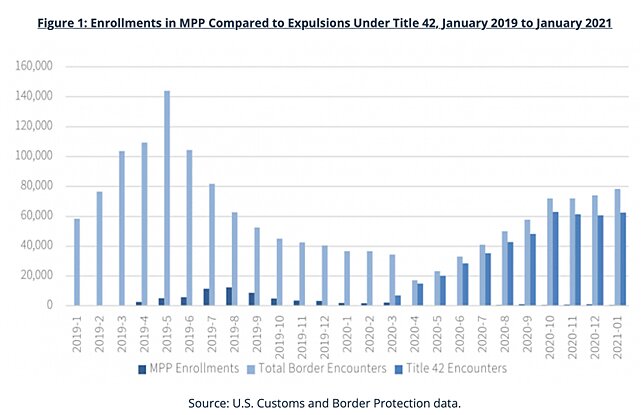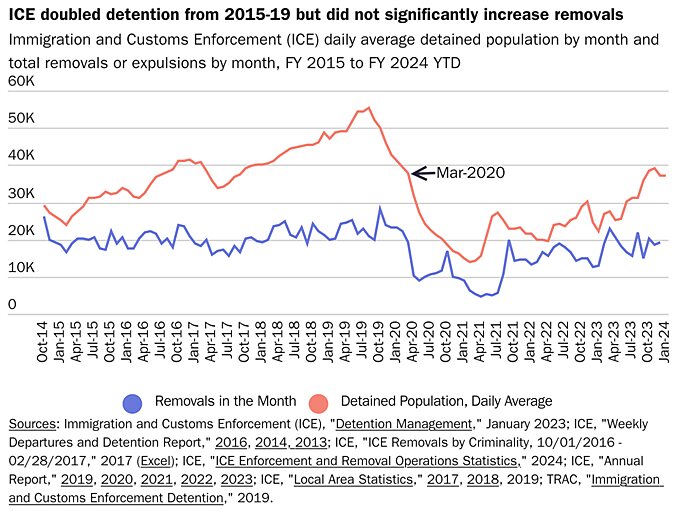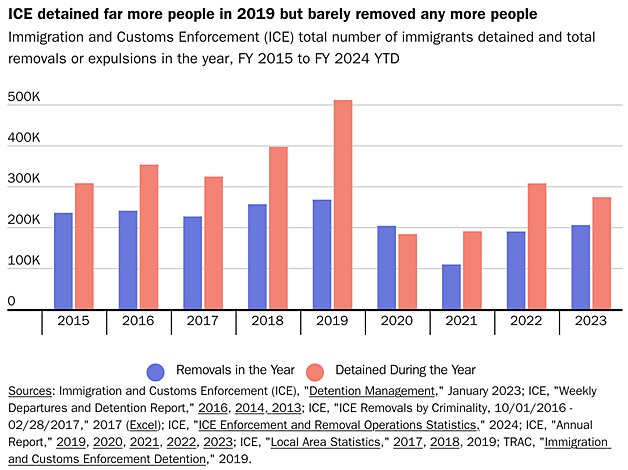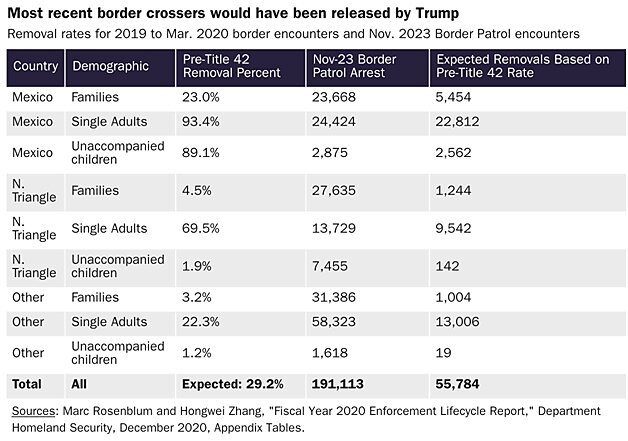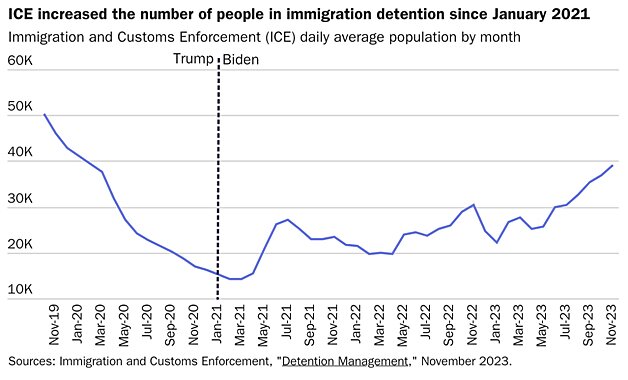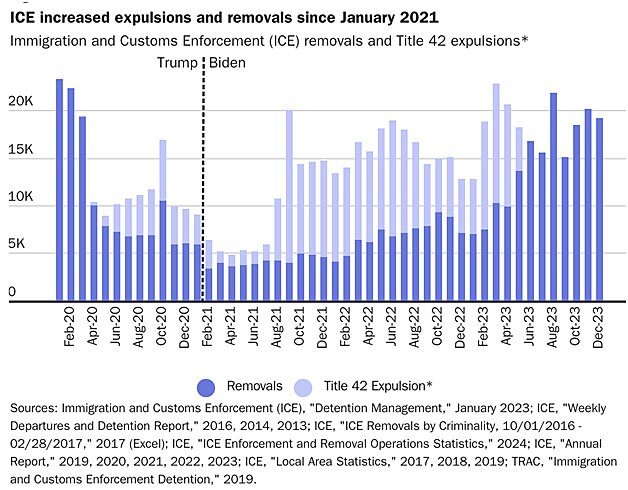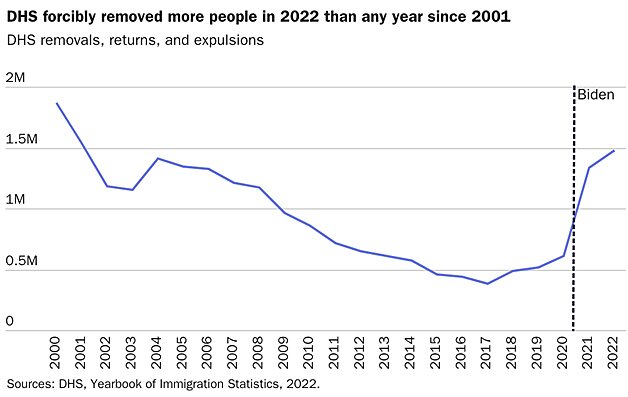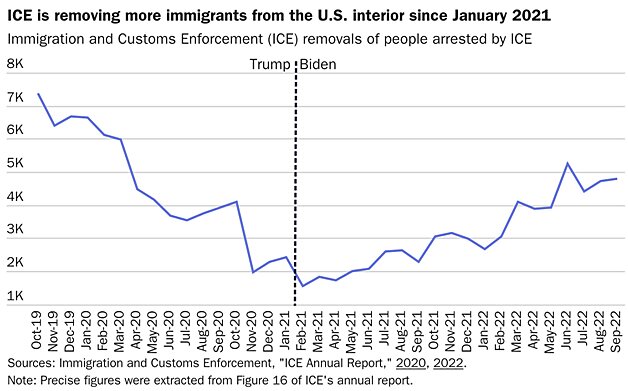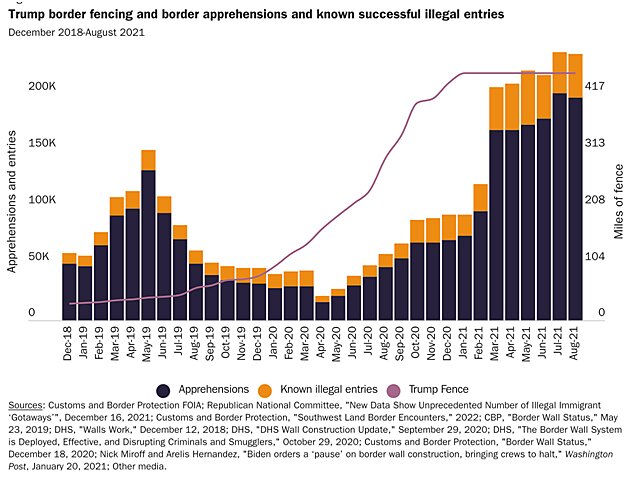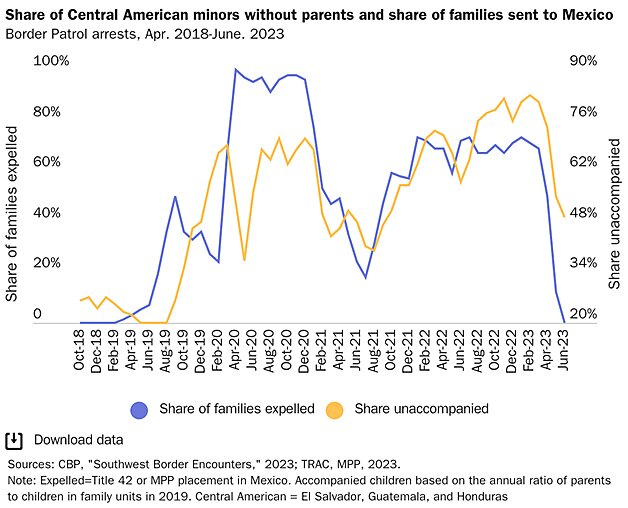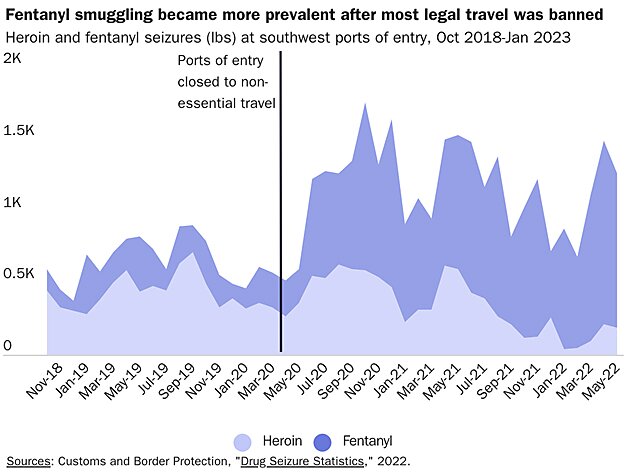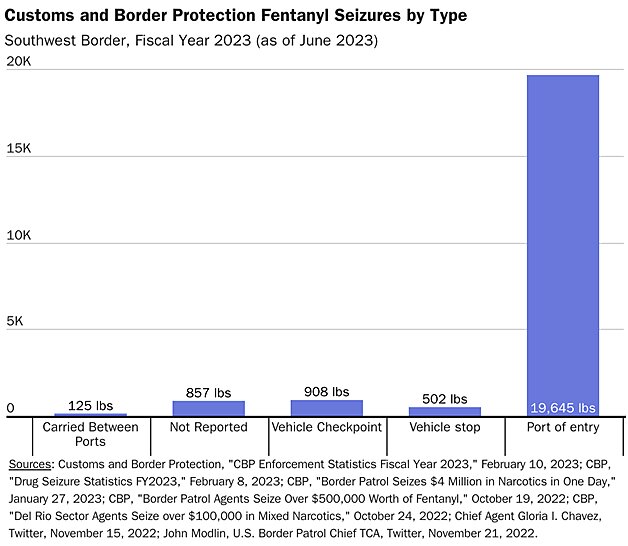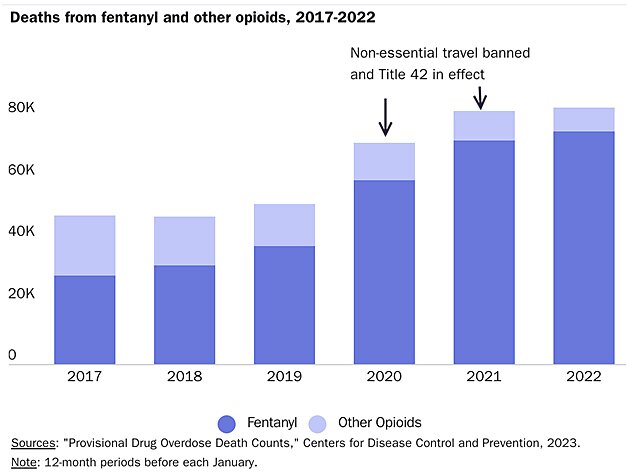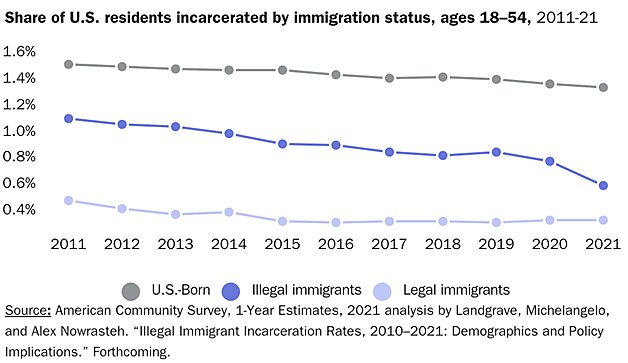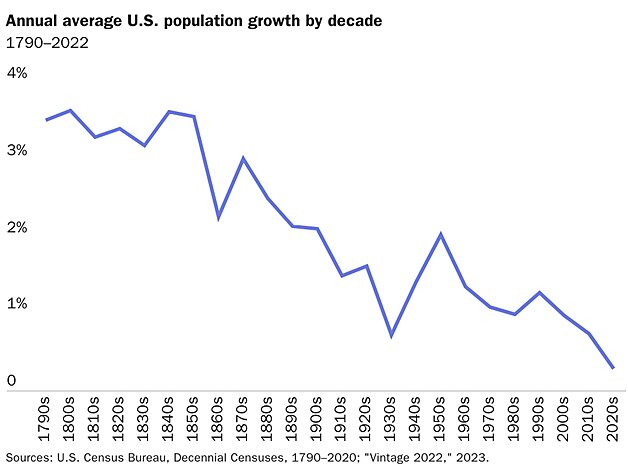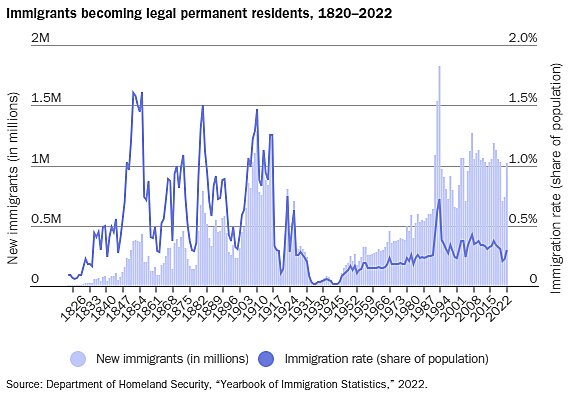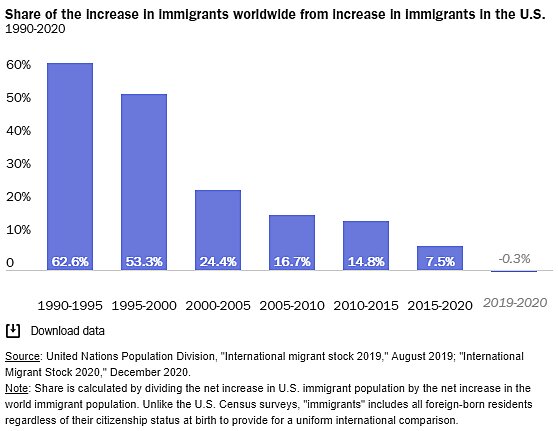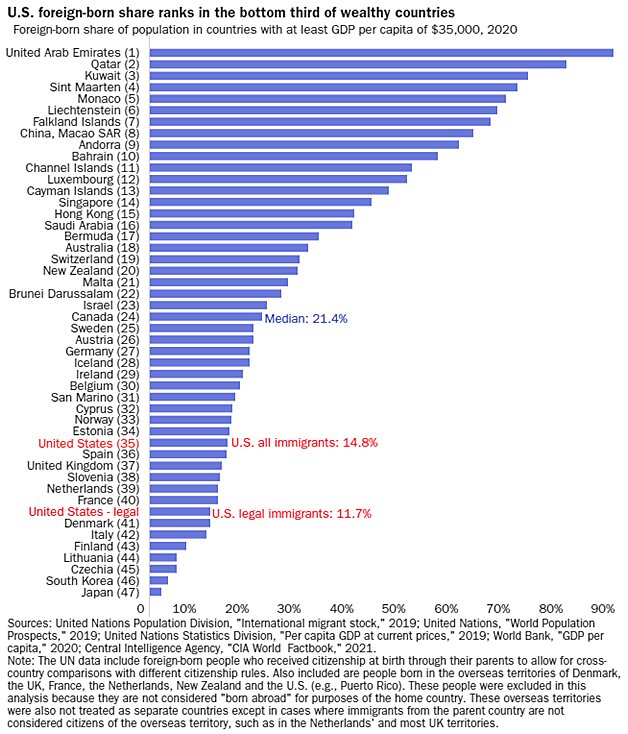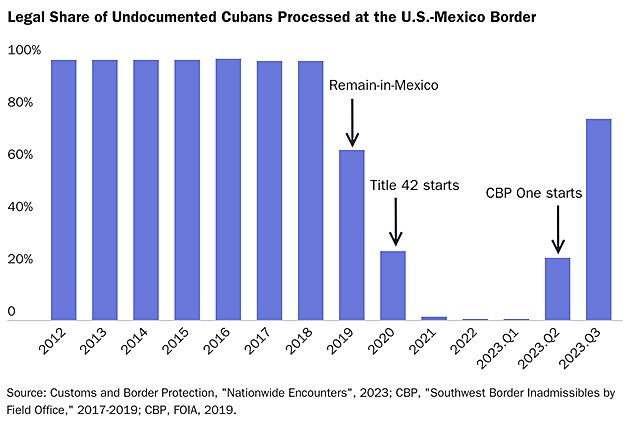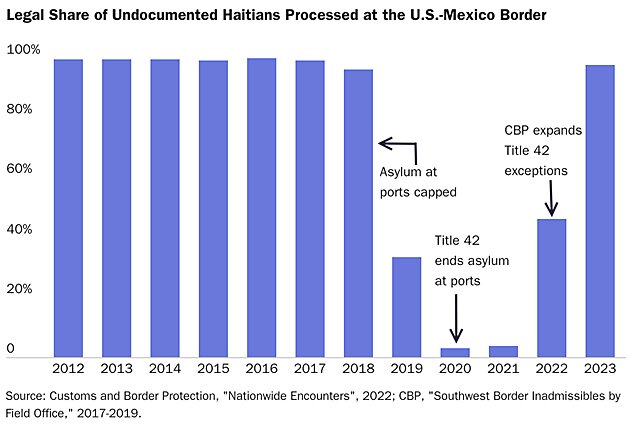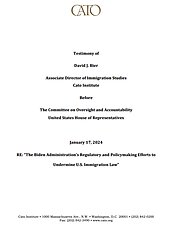Chairman Comer, Ranking Member Raskin, and distinguished members of the committee, thank you for the opportunity to testify.
My name is David Bier. I am the Associate Director of Immigration Studies at the Cato Institute, a nonpartisan public policy research organization in Washington, D.C. For nearly half a century, the Cato Institute has produced original immigration research showing that a freer, more orderly, and more lawful immigration system benefits all Americans. People are the ultimate resource. In a free country, immigrants can contribute to their new homes, making the United States a better, more prominent, and more prosperous place.
As a policy advisor for a former member of the House, I am honored to be invited to speak with you today about efforts to create an orderly and lawful immigration system.
Recovering from a four-year assault on the immigration system
Most of America’s immigration challenges are longstanding consequences of an outdated legal immigration system. But starting in January 2017, this flawed and already failing system underwent a years-long intentional sabotage campaign unlike anything witnessed in the history of modern immigration law. From January 2017 to January 2021, nearly 500 policies—large and small—were implemented to disrupt the legal immigration system’s normal operations.1 During this four-year period, the prior administration repeatedly attacked the rule of law, ignored court orders, and abandoned even the pretext of carrying out its duties to implement immigration law.2 It illegally spent appropriated money to provide proper care for immigrant detainees on dog food and night vision goggles for Border Patrol.3
More than 30 times, courts found that the prior administration’s policies were implemented illegally, but the assault was so relentless that many changes were not stopped.4 On the day that the current administration came into office, nearly every single fundamental area of immigration law had been shredded. The prior administration had suspended visa operations fully or partially at more than three-quarters of consulates around the world.5 Even when someone could schedule an appointment, the former president had imposed arbitrary categorical bans on visas, superseding family, diversity, and employment immigrant visa law for the first time in history. Monthly immigrant visa issuances were down 80 percent from the 2016 level as of December 2020. The administration banned even the highest-skilled temporary workers and slashed nonimmigrant visa issuances by 84 percent from their 2016 level.6
These decisions had nearly bankrupted our legal immigration agencies—the Bureau of Consular Affairs and U.S. Citizenship and Immigration Services (USCIS).7 Delays and denials for virtually every immigration benefit had exploded as the agency imposed new, bizarre, and unnecessary requirements. The government added hundreds of new pages to immigration forms and then rejected applicants who left any field blank, even if the question was not applicable to them.8 It had instituted a series of bans on certain disfavored nationalities, even for very close relatives of U.S. citizens and legal permanent residents. It had even abandoned America’s Afghan allies by failing to process Special Immigrant Visas despite setting a hard deadline to withdraw U.S. troops.9
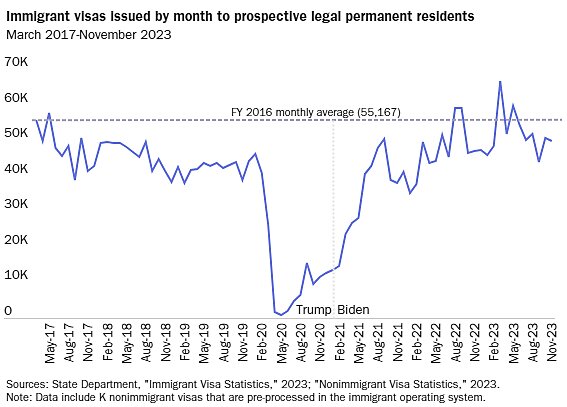
The prior administration even suspended U.S. asylum law for the first time since it was established in the Refugee Act of 1980. It also blocked what it called “nonessential” entries at Mexican and Canadian ports of entry to the United States, including individuals facing persecution abroad or violence in Mexico. For the first time in U.S. history, our government started dumping people into countries where they did not hold citizenship or residency. In December 2020, before the economy had even recovered from the COVID-19 shutdowns, border arrests were the highest for any December in 20 years.10 “Gotaways”—known entries that escaped Border Patrol’s detection—were the highest for any December in 15 years, even though there were nearly twice as many Border Patrol agents in 2020 as in 2005.11
Nonetheless, under its use of Title 42 expulsion authority, it eliminated any other consequences for people caught evading Border Patrol. The number of criminal prosecutions for illegal entry fell 87 percent.12Simultaneously, Immigration and Customs Enforcement (ICE) detention facilities were emptied, with the detained population falling 64 percent compared to December 2016.13 ICE removals and expulsions reached their lowest monthly totals since the creation of the agency in 2003.14 The number of immigration court decisions plummeted to the lowest levels on record.15
When I say the last administration crippled everything about U.S. immigration as it existed until 2017, I mean literally everything. From legal immigration to asylum to enforcement, nothing was left untouched. In its very first year, DHS even slashed human trafficking investigations to reassign investigators to go after low-level visa overstays.16 It is worth emphasizing that the financial mismanagement, policy sabotage, and increases in delays and denials all started before the pandemic,17 and after fully dismantling the system, there were no plans whatsoever to repair it.
Of course, the architects of this disaster went beyond simply dismantling the U.S. system. They also decided to use immigration law for the psychological torture of children. They separated children from their parents and pretended that the law required this outcome. Yet, they only ever prosecuted 32 percent of crossers at most, allowing numerous adults without children to avoid prosecution to prioritize locking up parents.18 They deliberately targeted children. U.S. attorneys were reporting that “sex offenders were released” to make room for prosecuting parents with children.19 The courts found this policy of targeting children to be unconstitutional,20 but only the White House managed to get them to stop.
Efforts to rebuild a functioning system
Although the new administration perpetuated some of these policies and failed to implement many proposals that would have undone the damage much faster, it has slowly attempted to restore a functioning immigration system. It has worked to reunite separated families, and today, although significant delays and backlogs continue, consulates have largely reopened and are issuing the most immigrant and nonimmigrant visas to travelers, students, temporary workers, and new legal permanent residents since 2016. Despite facing significant staffing shortages, the Bureau of Consular Affairs adopted innovative new initiatives to make this possible. This has saved the U.S. tourism industry and kept numerous small businesses from closure due to lack of manpower.
The new administration increased the processing of Afghan allies by tenfold before ultimately evacuating tens of thousands of Afghans who had been abandoned by the prior administration, facing the threat of death at the hands of the Taliban.21 U.S. Citizenship and Immigration Services (USCIS) is now completing the highest number of immigration benefit applications since 2007, a heroic but ultimately insufficient effort to fix the failures of the last administration.22 It has done more than any administration to reduce illegal employment in the United States by using its authorities to provide work authorization to immigrants. Additionally, U.S.-Mexico and U.S.-Canada ports of entry have reopened to travelers, infusing billions of dollars into border communities.23
The previous administration also gutted immigration enforcement in the United States, while the current administration has largely ended those policies. In fact, it may have even overemphasized rebuilding the immigration system in this aspect to the exclusion of some other areas. During its first two years, it had removed or expelled a greater number and a higher percentage of crossers compared to the previous administration’s final two years in office.24
Since January 2021, the number of immigrants in detention has more than doubled, coupled with an increase in interior enforcement.25 The government has made extraordinary investments in the removal process. For instance, immigration courts completed more cases and ordered more removals in the last year than any year in their entire history.26 In 2022, the Department of Homeland Security forcibly removed more people from U.S. soil than any administration since fiscal year 2001.27
In many cases, these efforts yielded counterproductive results. Continuing the prior administration’s Title 42 expulsions to Mexico incentivized repeated crossings by those returned there. Consequently, Border Patrol rearrested about half of those expelled to Mexico. With no incentive to seek out Border Patrol to request asylum, numerous repeat crossers evaded Border Patrol, successfully entering the United States without apprehension. Since the Centers for Disease Control ended the public health emergency and Title 42 expulsions in May 2023, repeat crossings and evasions have fallen by about 50 percent.28 More people have voluntarily turned themselves into Border Patrol for screening, resulting in one of the lowest rates of evasion on record.
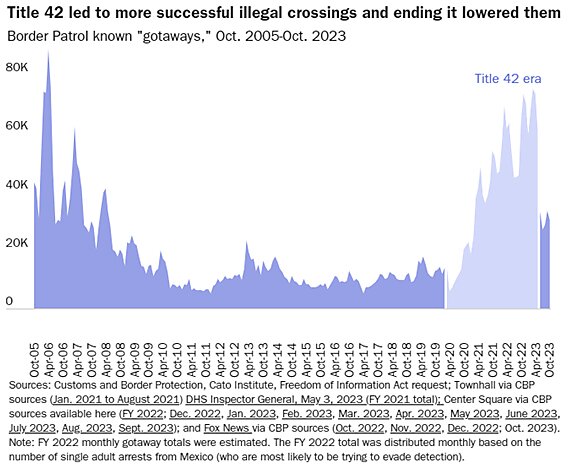
The administration could improve on this achievement by rescinding its May 2023 regulation that establishes a presumptive ban on asylum. By ensuring that asylum seekers receive a fair and impartial process, more people would be encouraged to seek out Border Patrol agents, making their jobs easier.
Efforts to improve the immigration system
Of course, merely restoring a fundamentally flawed immigration system was never going to be sufficient to completely eliminate violations of the law. America’s immigration laws and regulations were already far too restrictive, offering little to no viable alternative to illegal immigration for most immigrants seeking entry to the United States. Thanks to extremely low caps established more than three decades ago, only 3 percent of applicants will receive green cards this year.29 Furthermore, for many people in various countries, there is no direct path to apply for a green card at all. With no other legal option, many individuals resort to traveling to the border.
This has been particularly evident when more people are fleeing tyrannical governments than ever before. The globally displaced population rose to 108 million last year, up from 62 million in 2016 and 34 million in 2012.30 As documented in Cato’s Human Freedom Index, governments worldwide have implemented new oppressive policies and have reversed the long-term trend toward greater human liberty.31
Of course, in years like 2009 or 2020, when the U.S. labor market was significantly depressed, fewer people could finance a journey to the United States. However, as the U.S. economy recovered, the number of Border Patrol arrests increased proportionally, particularly for immigrants from countries other than Mexico. From January 2021 to May 2023, the United States consistently averaged 10.5 million job openings per month. Every month since January 2021 has seen more job openings than any previous month.32
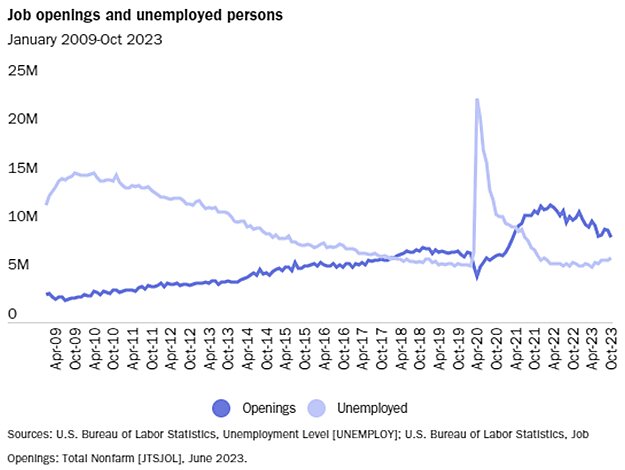
The unprecedented availability of jobs, combined with the global displacement crisis, led to an unprecedented surge in illegal migration to the southwest border. Initially, the administration attempted to address this influx solely by expelling as many crossers as possible to Mexico. However, Mexico only agreed to accept limited numbers of certain nationalities, and even when they accepted expulsions, expelled immigrants had no choice but to attempt to re-enter the United States, which they did in record amounts—frequently evading Border Patrol and finding their way into the interior. The expulsion policy ultimately proved to be a failure, even though Border Patrol and ICE expelled or removed a higher percentage of crossers compared to the last two years of the prior administration.

Fortunately, in 2022, DHS started to pilot new approaches to managing migration. After the Russian invasion of Ukraine caused tens of thousands of Ukrainians to arrive at the U.S.-Mexico border to request asylum, DHS made a sudden policy reversal; they no longer categorically excluded immigrants from seeking asylum at ports of entry for Ukrainians. As a result, over 99 percent of the Ukrainians entered the country lawfully. DHS then launched the Uniting for Ukraine program in April 2022, allowing Ukrainians with U.S. financial sponsors to fly directly to the United States and receive humanitarian parole. This policy reduced the number of Ukrainians entering at the southwest border by over 99 percent.33
Having proven that it could process numerous asylum seekers at ports of entry, DHS began permitting some asylum seekers in Mexico to enter legally at southwest land ports of entry if they were referred by an authorized non-governmental organization (NGO). For various reasons, Haitians were the main beneficiaries of this change in policy, and it caused Haitian illegal entries—previously at record highs—to fall by 98 percent.34
Having shown that Uniting for Ukraine was a success, the administration introduced new parole sponsorship programs for Cubans, Haitians, Nicaraguans, and Venezuelans. Simultaneously, in January 2023, the administration piloted the use of the CBP One app as a method of scheduling parole appointments for immigrants coming to southwest ports of entry. As a result of these two policies, in November 2023:
- Cuban illegal entries were down 96 percent from their pre-parole sponsorship peak in December 2022;
- Haitian illegal entries were down 98 percent from their pre-parole sponsorship peak in May 2022;
- Nicaraguan illegal entries were down 88 percent from their pre-parole sponsorship peak in December 2022;
- Venezuelan illegal entries were down 32 percent from their pre-parole sponsorship peak in October 2022.
Overall, unlawful entries were down 79 percent for these four countries. As importantly, the proportion of unlawful entries has fallen drastically, as legal entries now outnumber illegal entries for three of the four countries.
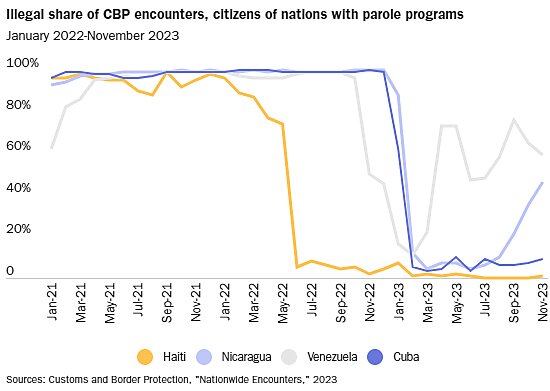
These policies are limited initiatives with caps set far below the level of demand, which reduces their overall effectiveness.35Nonetheless, they are clearly helping, and Congress should require DHS to eliminate these arbitrary caps and extend them to other nationalities. This would cause illegal immigration to fall and establish a more humane and orderly process for the entry of immigrants.
Criticism of efforts to rebuild the immigration system
Despite these efforts to rebuild the immigration system, critics argue that the administration is undermining U.S. immigration law. It’s worth noting that many of these critics are the same people who dismantled America’s system under the prior administration.
-Releases at the border do not indicate a failure to enforce the law.
The primary charge leveled against the administration is that Border Patrol is not following the law by failing to detain every individual who crosses the border illegally. First, it’s important to note that the mandate to detain does not negate the authorities, including parole, that allow DHS to release someone who is in detention, as Justice Brett Kavanaugh recently recognized in Biden v. Texas.36
Second, the Constitution, which supersedes any law, mandates the recent types of releases. As the Supreme Court recently recognized, “congressional funding has consistently fallen well short of the amount needed to detain all land-arriving inadmissible aliens at the border.”37 Congress has funded only 34,000 ICE detention beds, 38while DHS is already using other funds to detain 37,131 people.39 However, immigrant arrivals at the southwest border exceed this capacity approximately every four days. It is not physically possible to detain all crossers.
The 8th Amendment of the Constitution prohibits detaining anyone without access to sufficient food, a place to sleep, and basic hygiene. A universal mandate to detain would require detaining more than 1 million people in conditions that would constitute cruel and unusual punishment.40
Third, detention proponents claim that increased detention would deter people from arriving at the border, yet there is no correlation between higher detention and lower border arrivals. This is largely because even when DHS detains more people, it still fails to deport most of them. For instance, when DHS increased the daily detained population from 28,000 to 50,000 from 2015 to 2019, it did not significantly increase removals.41
-Deregulating parole is not a violation of law.
The other major aspect of the administration’s immigration policy facing criticism for potentially violating the law is its use of parole to allow immigrants to enter the country legally. Congress provided the authority to grant parole—a discretionary form of travel authorization—to the DHS Secretary.42 The administration has relaxed regulations for certain immigrants, making it easier for them to receive parole. Removing onerous regulations not required by the statute is lawful and no different than removing regulations on any other lawful entry category. Since the enactment of the parole statute in 1952, various administrations have promulgated at least 126 parole orders relaxing regulations for certain categories of aliens.43 Congress has repeatedly acknowledged and ratified these orders, including under this administration. The statute only requires that grants must serve a “significant public benefit” or address “urgent humanitarian reasons.” It is obvious that many Cubans, Haitians, Nicaraguans, and Venezuelans have urgent humanitarian reasons to flee the deplorable conditions in those countries, largely caused by their failing governments. Furthermore, no one disputes that reducing illegal immigration yields a significant public benefit. Unlike other entry categories, there is no limit on the number of parolees.
The statute also requires grants to be on a “case-by-case” basis, but of course, they all are. Defining significant public benefit or urgent humanitarian reasons to include certain classes of immigrants, as has always been done, does not mean the grant to an individual based on those criteria is not case-by-case. All grants of parole under this administration have undergone a case-by-case review by DHS. The government has not granted any group of immigrants parole en masse by, for instance, declaring that anyone with a Ukrainian passport is deemed to have received parole.
In 1996, there was a proposal in Congress to limit the permissible definitions of significant public benefit or urgent humanitarian reasons, restricting it to very narrow types of parole. This proposal was ultimately rejected.44 Instead, Congress passed a law requiring that grants of parole that last more than one year be included in the formula for calculating the family-based cap.45 This episode clearly demonstrates that Congress fully expected that parole would frequently extend beyond one year. Moreover, Congress has repeatedly recognized and approved grants of parole to various groups, including Afghans, Ukrainians, relatives of U.S. citizens, and others—both retrospectively and prospectively.46
-Prioritization of immigration enforcement is not a violation of law.
Critics also argue that the administration has neglected its duty to enforce immigration law by prioritizing the enforcement of criminal aliens, national security threats, and recent border crossers.47 But in the Homeland Security Act, Congress mandated that the DHS secretary must “establish[] national immigration enforcement policies and priorities.”48 Every administration has used this authority to direct the activities of ICE agents and other agencies.49
Congress has often recognized this authority to prioritize enforcement. In eight different appropriations bills from 2008 to 2016, Congress dictated that the DHS secretary “shall prioritize the identification and removal of aliens convicted of a crime by the severity of that crime.”50 This indicates that the secretary’s prioritization is typically not subject to any restrictions. The Supreme Court upheld the administration’s prioritization in United States v. Texas, in part, because the Constitution separates the power to enforce laws from the legislative power to create them.51 When DHS’s authority to make arrests was not focused on criminals, threats, and border crossers, ICE agents often wasted agency resources arresting low-level offenders in lieu of higher-priority targets. For instance, it was reported that:
[Homeland Security Investigations] agents who have been temporarily reassigned to low-level enforcement work under Trump “would ordinarily be doing counterterrorism or smuggling,” said Peter Vincent, a former chief of the agency’s international operations. “They feel that is not only insulting but dangerous because of the missions that are being neglected.”52
Another ICE agent explained the chaotic outcomes resulting from the prior administration’s near-total lack of priorities:
“This was a family op. So where are we going to put the families? There’s no room to detain them, so are we going to put them in hotels?” the officer said. On Friday, an answer came down from ICE leadership: the families would be placed in hotels while ICE figured out what to do with them. That, in turn, raised other questions. “So the families are in hotels, but who’s going to watch them?” the officer continued. “What happens if the person we arrest has a U.S. citizen child? What do we do with the children? Do we need to get booster seats for the vans?” … The ICE officer said, “One person told me, ‘I never thought I’d say this, but I miss the Obama rules. We removed more people with the rules we had in place than with all this. It was much easier when we had the priorities. It was cleaner.’ ”53
ICE agents did exercise their discretion to make arrests in a wider range of circumstances, but this did not necessarily lead to more removals. For instance, workplace raids produced arrests of low-level offenders at a very high cost, but less than a third of those arrested were actually removed over a two-year period.54 When Congress mandates enforcement of a law without appropriating the resources to do so, it makes sense to prioritize enforcement based on other factors, such as risk to the community. This is not unusual, as federal, state, and local law enforcement agencies prioritize criminal cases in the same manner.
-Ending failed policies did not undermine the rule of law.
Other critics argue that the current administration has encouraged illegal immigration by repealing policies implemented by the prior administration, especially the Remain in Mexico program. But Congress has never mandated the Remain in Mexico program, as the Supreme Court made clear, so its non-utilization does not undermine U.S. immigration law.55 In fact, the Remain in Mexico program violated the plain language of the statute, and though it was terminated before the Supreme Court heard the case, the appeals court ruled that it was unlawful.56
More importantly, the Remain in Mexico program was a dismal failure. The program did not significantly deter crossings in 2019, as entries were already declining before the program was expanded. About one-third of all people enrolled in the program were re-arrested at the U.S.-Mexico border, a recidivism rate over four times higher than that of other crossers in 2019.57
Canceling MPP had absolutely nothing to do with the increase in migration that occurred in 2021. At its height, the program never included more than a quarter of crossers.58 But when the administration canceled the program in January 2021, it was sending just 33 people back to Mexico daily.59 In contrast, in February 2021, DHS was using Title 42 authority to expel three times as many people back to Mexico every hour.60 Even when the Remain in Mexico policy was briefly reinstated at a higher level than when it was canceled, it had no effect. Even groups like single adults from the Northern Triangle of Central America, who were universally expelled to Mexico, were undeterred by expulsions to Mexico. It’s clear that simply sticking people in Mexico is not the answer to this crisis.
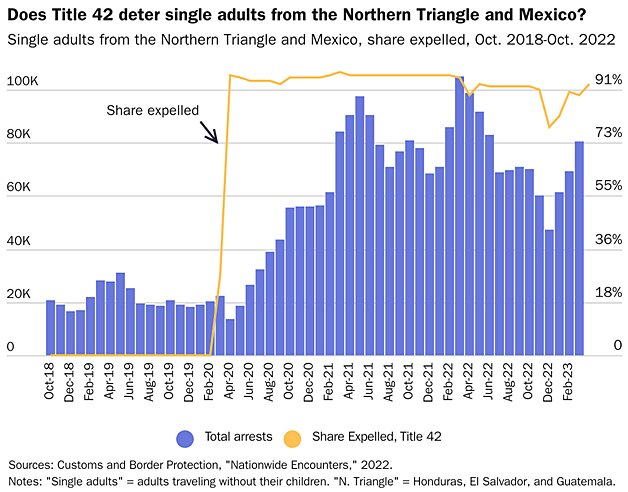
Other changes were even less significant. The new administration canceled the Asylum Cooperative Agreements (or “safe third” agreements) with Central American countries. However, these had already been suspended by the time the new administration took over in January 2021. They were only used for 945 people sent to Guatemala.61 The previous administration used threats of economic warfare to coerce the country into accepting the agreement, despite objections of its country’s supreme court.62 The sham agreement not only mocked the U.S. law that authorized it and undermined the rule of law in both countries.
Ending border wall funding after most of the planned wall had already been built did not undermine the rule of law either. How could canceling a planned wall that did not exist under either administration cause an increase in border arrests? The border wall has proven disastrous. It has needed 11 repairs per day due to smugglers easily cutting through it with cheap power tools,63 further contributing to the chaos and an increase in the number of deaths and injuries at the border when people fall from it. The roads used to build the wall in remote areas have allowed smugglers to bring people into the United States more efficiently.64 Equally important, the border wall was being financed with money obtained illegally from the U.S. military budget. Canceling the project upheld the rule of law in the United States.
Reforming the immigration system would do the most to stop violations
Unfortunately, the U.S. immigration system does not facilitate lawful migration; instead, it obstructs it and encourages illegal immigration. The fundamental legal immigration framework dates back to 1924, with its last significant update occurring in 1990. Each year, about 97 percent of the millions of applicants are rejected.65 The available categories are extremely narrow. A more effective approach would be to deregulate legal immigration, allowing immigrants to enter as long as they do not pose a security threat and meet other basic criteria.
With this system, immigrants would be able to arrange travel directly to their destinations without imposing additional costs on border communities. They could immediately start working and contributing to the U.S. economy. Such a system would also allow Border Patrol to secure the border against criminals. Congress should start by mandating that DHS continue and expand the parole sponsorship programs to other countries in the Americas while removing the caps on those programs.
Appendix: Key Charts
